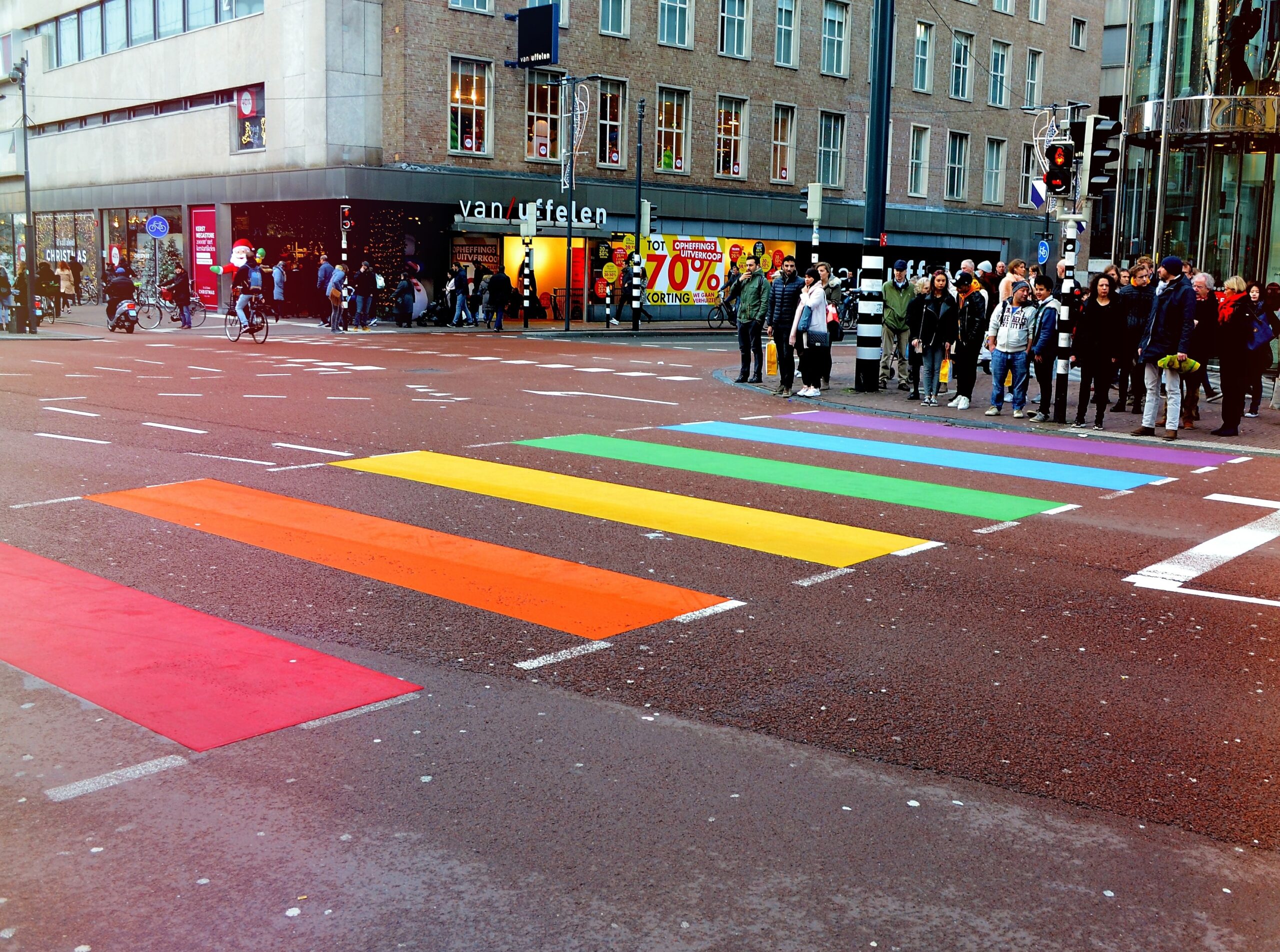Mobile health care and LGBTQ+ communities: A look behind the letters

Many mobile clinics care for LGBTQ+ communities delivering trustworthy, convenient, compassionate care. Mobile Health Map recently updated the language on our website from LGBT to LGBTQ+. Read this post by Julia Beatini, MD candidate at Harvard Medical School to learn more about what this acronym means and why it matters.
Key Points:
- “LGBTQ+” stands for lesbian, gay, bisexual, transgender, and queer/questioning. It is used to represent the diversity of sexual orientations and gender identities within the community.
- Having a unifying term like “LGBTQ+” is important for building community, creating a sense of belonging, and in political advocacy.
- The LGBTQ+ community in the U.S. faces barriers to healthcare that result in negative health outcomes. Collecting data about clients’ sexual orientation and gender identity can help us better understand how to meet the needs of this population.
Many mobile clinics care for LGBTQ+ communities, and as our understanding of gender and sexual orientation changes over time, our language evolves too. This article will answer common questions about words used to describe sexual and gender minority communities, and how this relates to mobile health care.
Where did the different acronyms come from? What do they mean?
The phrase “gay community” first became popular in the 1960s. However, many people felt that the term did not represent the diversity of the community it claimed to include. As a result, the term “LGBT” – which stands for lesbian, gay, bisexual, and transgender – popped up in the 1990s. It was used as an umbrella term to refer to anyone who did not identify as heterosexual (“straight”) or cisgender (someone whose gender matches their sex assigned at birth).
While “LGBT” is still commonly used, other variations such as “LGBTQIA” or “LGBTQ+” have sprung up more recently to recognize and include as many identities as possible. The letter “Q” refers to “queer”. In this past, “queer” was used as a slur. However, some people have reclaimed the word to describe sexual orientations or gender identities that are not heterosexual or cisgender. “Q” is also used to include those who are “questioning”. “Questioning” means that someone is actively exploring their sexual orientation or gender identity. “I” stands for intersex. This describes people who are born with natural differences in sex characteristics that do not fit rigid definitions of male and female bodies. “A” stands for asexual. This describes people who experience little to no sexual attraction at all.
The “+” in LGBTQ+ is a way of including more identities not named by the other 5 letters. Some examples include pansexuality, which describes experiencing attraction to any person regardless of their gender. It also includes Two-Spirit, a term used by some Indigenous and First Nations individuals to describe people who are not straight or cisgender.
Overall, no term is perfectly inclusive since self-expression can change over time and present in many ways. However, it is not “wrong” to use one acronym over another when referring to the community. The changes simply reflect efforts to increase visibility and inclusivity within a diverse group. A more complete list of terms to use and avoid can be found in the GLAAD reference guide.
Why is terminology important?
Having a unifying term like “LGBTQ+” is important for affirming identity and creating a sense of pride. It helps people feel connected to a larger group with shared experiences, which creates a sense of belonging. These terms are also important for political advocacy. They can help increase visibility, fight discrimination, and advance policies that promote equity.
Why do some mobile clinics collect data about sexual orientation and gender?
The LGBTQ+ population in the US faces significant barriers to accessing healthcare. Members of this community are more likely to experience discrimination from healthcare providers. They also report more difficulty finding physicians with the knowledge to meet their needs. For nearly 25% of transgender adults, this has led to delaying or avoiding visits due to fear of discrimination . LGBTQ+ adults are also twice as likely as non-LGBTQ adults to be uninsured. This gap in coverage is made worse by the fact that many states do not have laws that protect against gender or sexuality-based discrimination in insurance coverage.
These barriers to accessing care have a negative impact on health. National surveys show that lesbian, gay, bisexual, and transgender individuals report higher rates of depression, anxiety, and substance use disorders than heterosexual and cisgender respondents. These differences widen in individuals with a higher burden of minority stress and less access to social and financial resources.
Mobile health clinics are uniquely able to meet the needs of under-resourced LGBTQ+ individuals. Many mobile clinics employ community health workers and park where people live and work. This may create a less intimidating and more welcoming environment than traditional clinics.
Mobile clinics also offer a chance to access care regardless of insurance status. In 2020, as many as 13% of mobile clinics nationwide reported the LGBTQ+ community as a target population. However, any clinic may choose to collect data about the sexual orientation and gender identity of their clients. This allows us to better understand the use of clinics among LGBTQ+ individuals, and track how needs of these communities change across different locations.
Does your mobile clinic care for LGBTQ+ communities?
Many mobile clinics care for LGBTQ+ communities. If your clinic is one of those, be sure to let us know by taking the following steps:
- Register your clinic
- Tell us about your organization, such as name, location, and services offered.
- Select “LGBTQ+” in the section titled “Populations Served.”
If your clinic is already registered, visit your dashboard and select “Edit Clinic.” Update your populations served and anything else that may have changed.
If you have any questions, please email us at mobilehealthmap@hms.harvard.edu.

